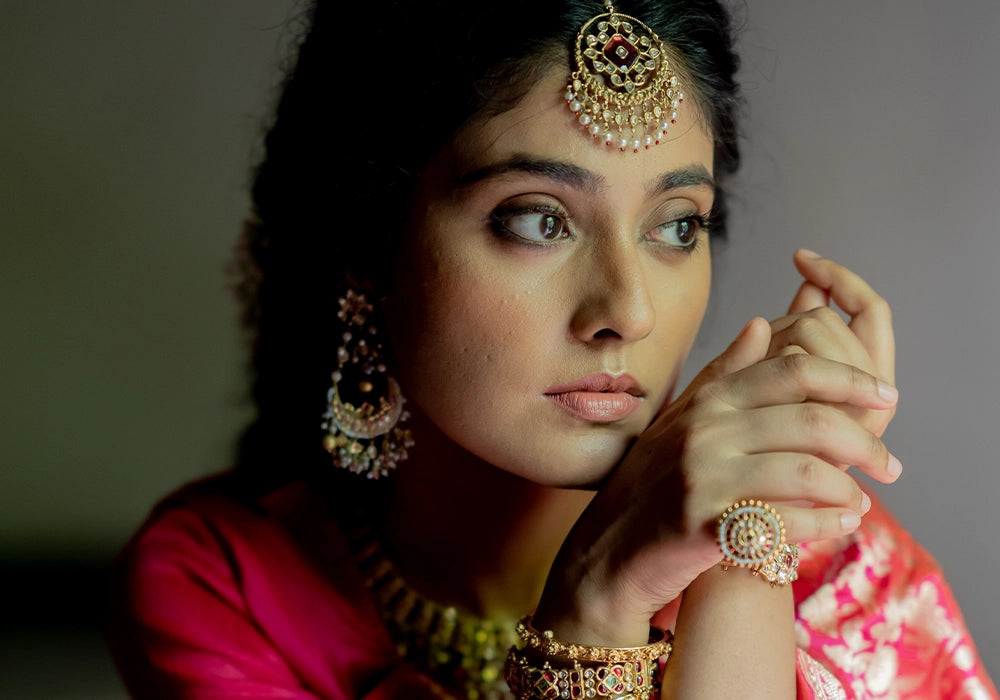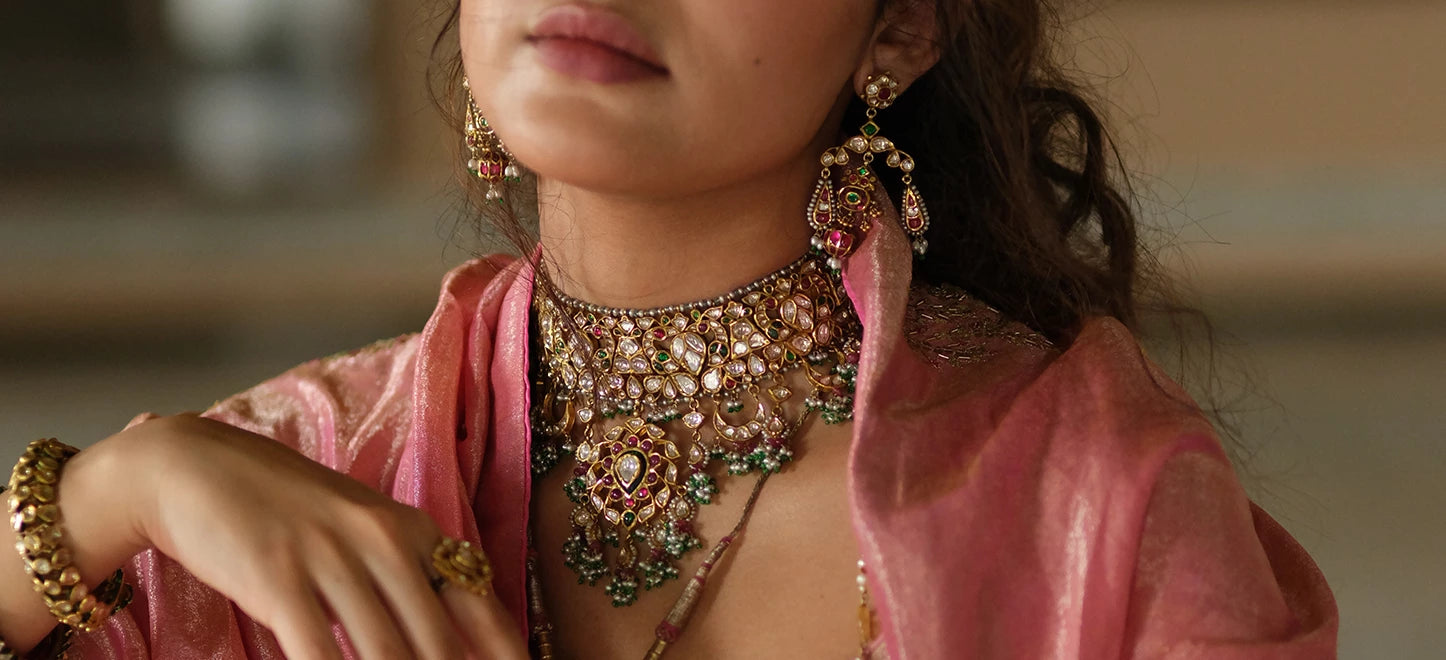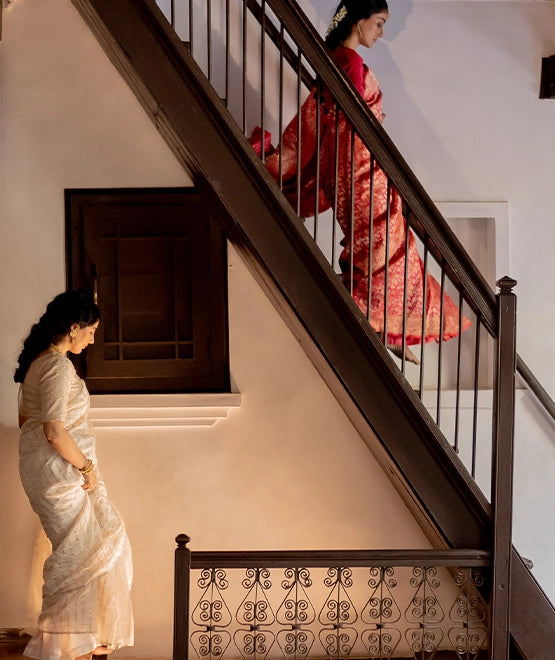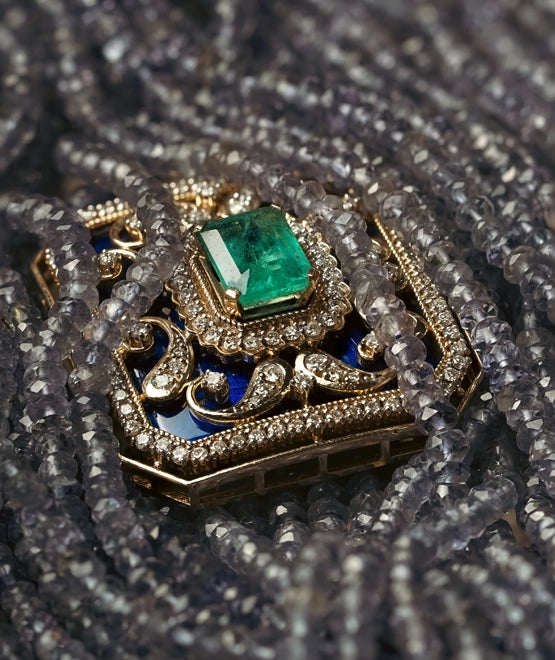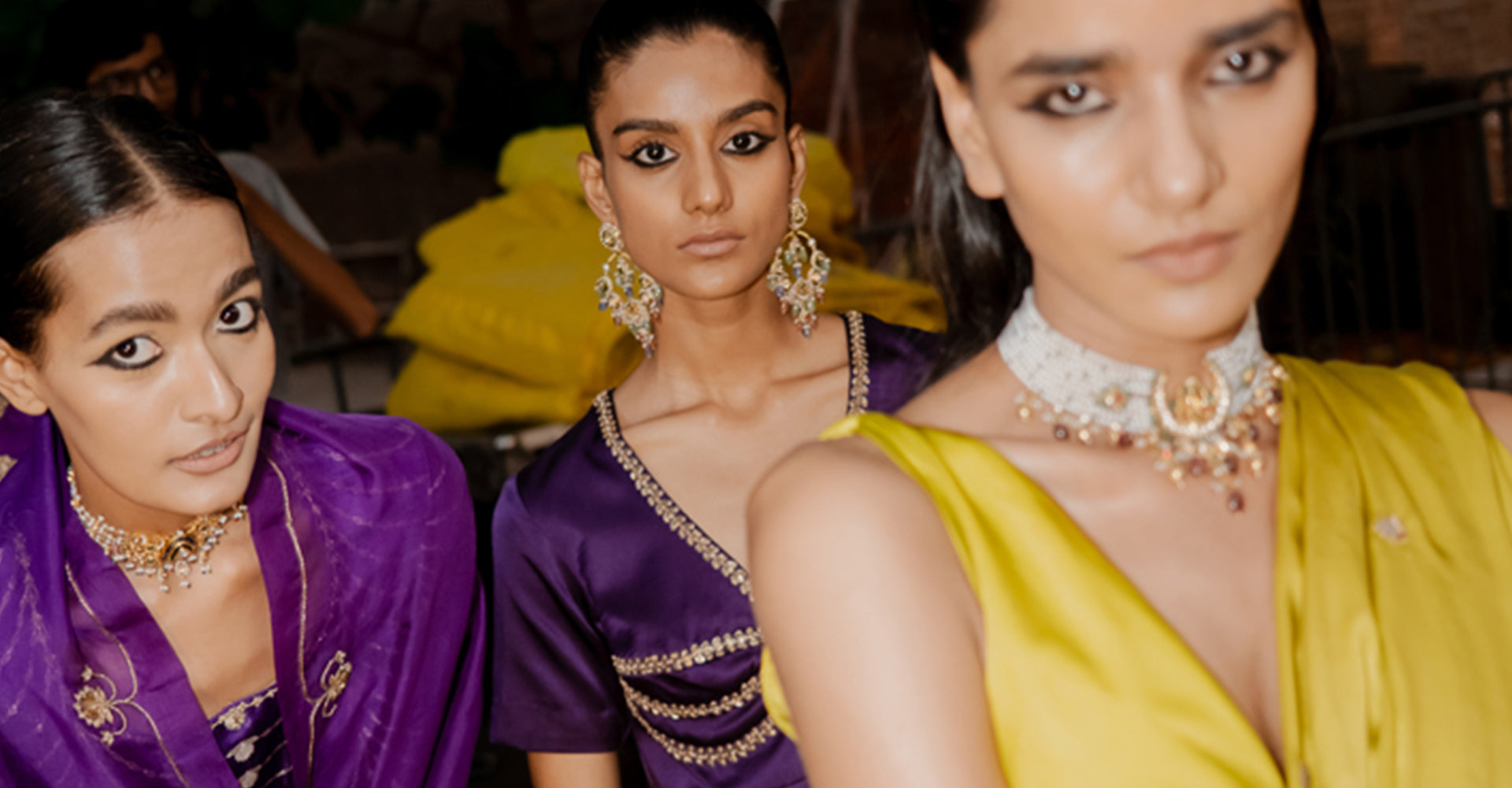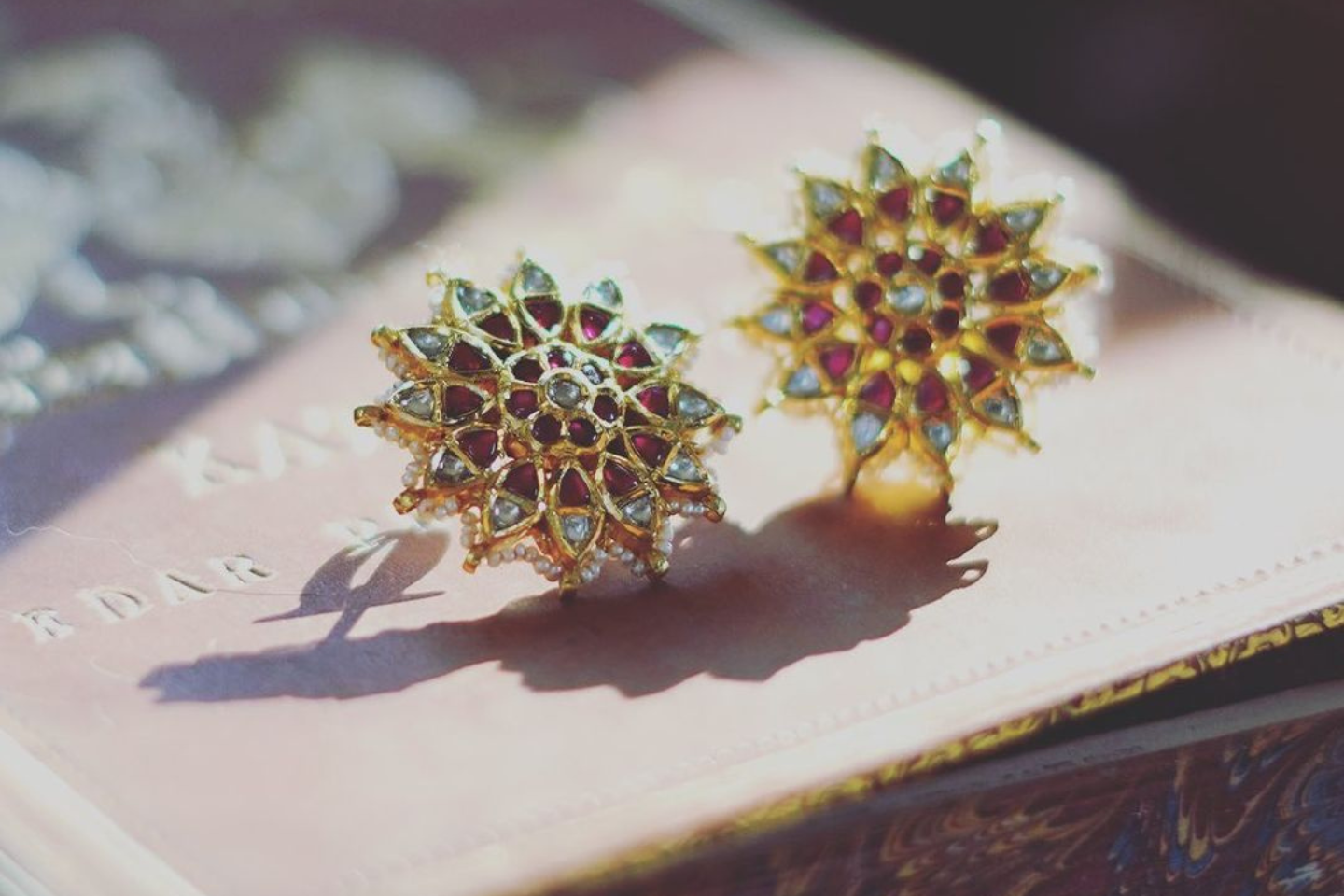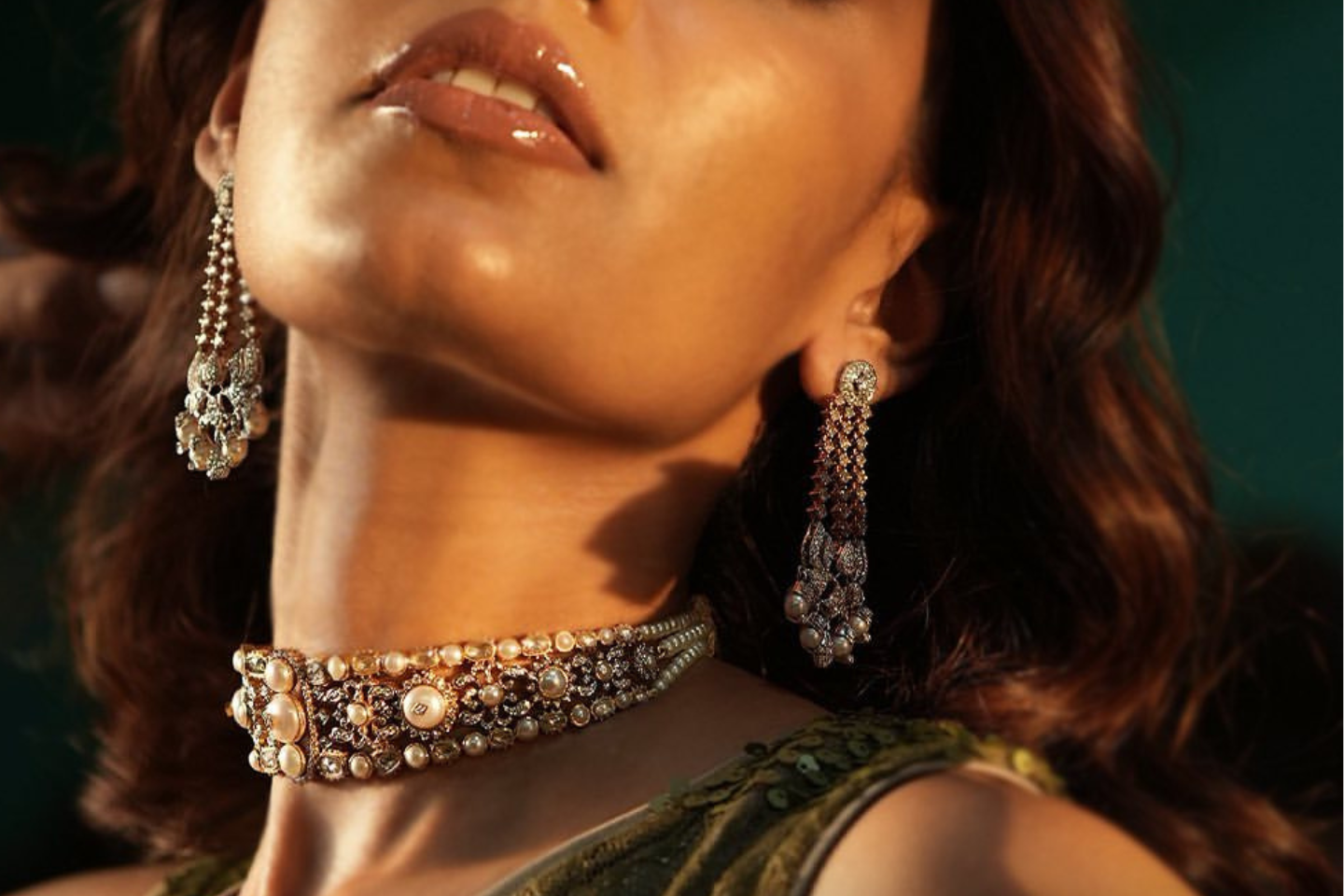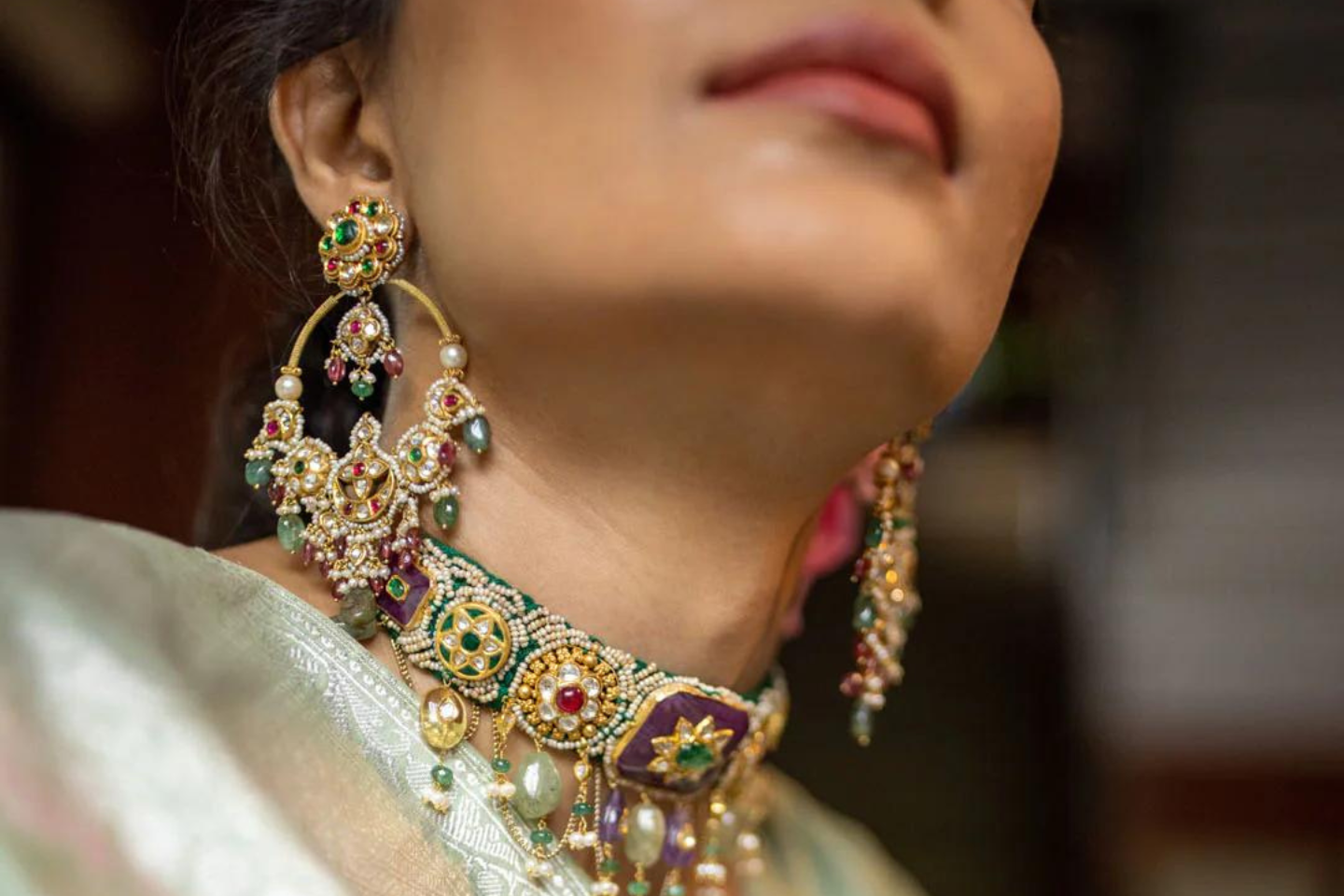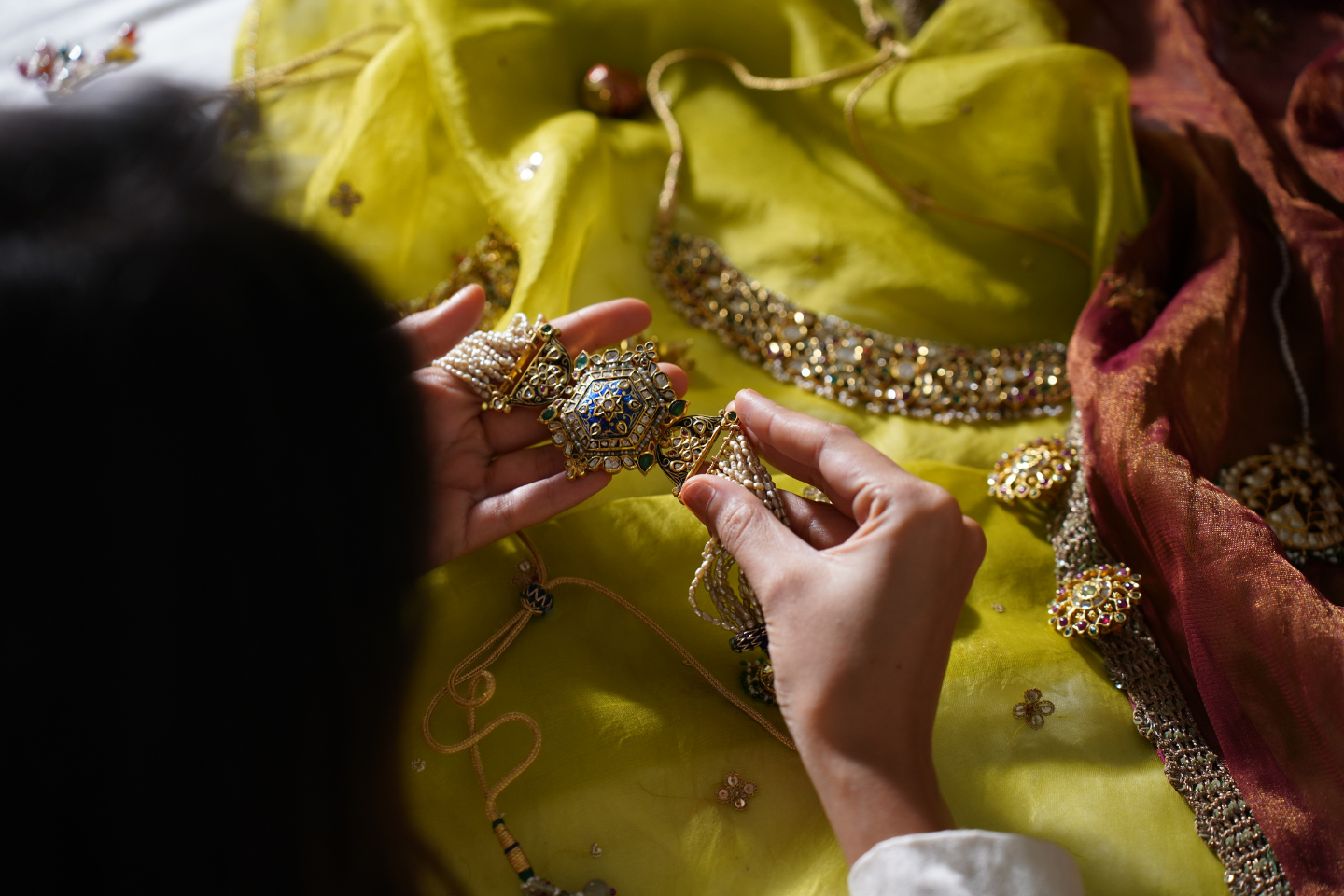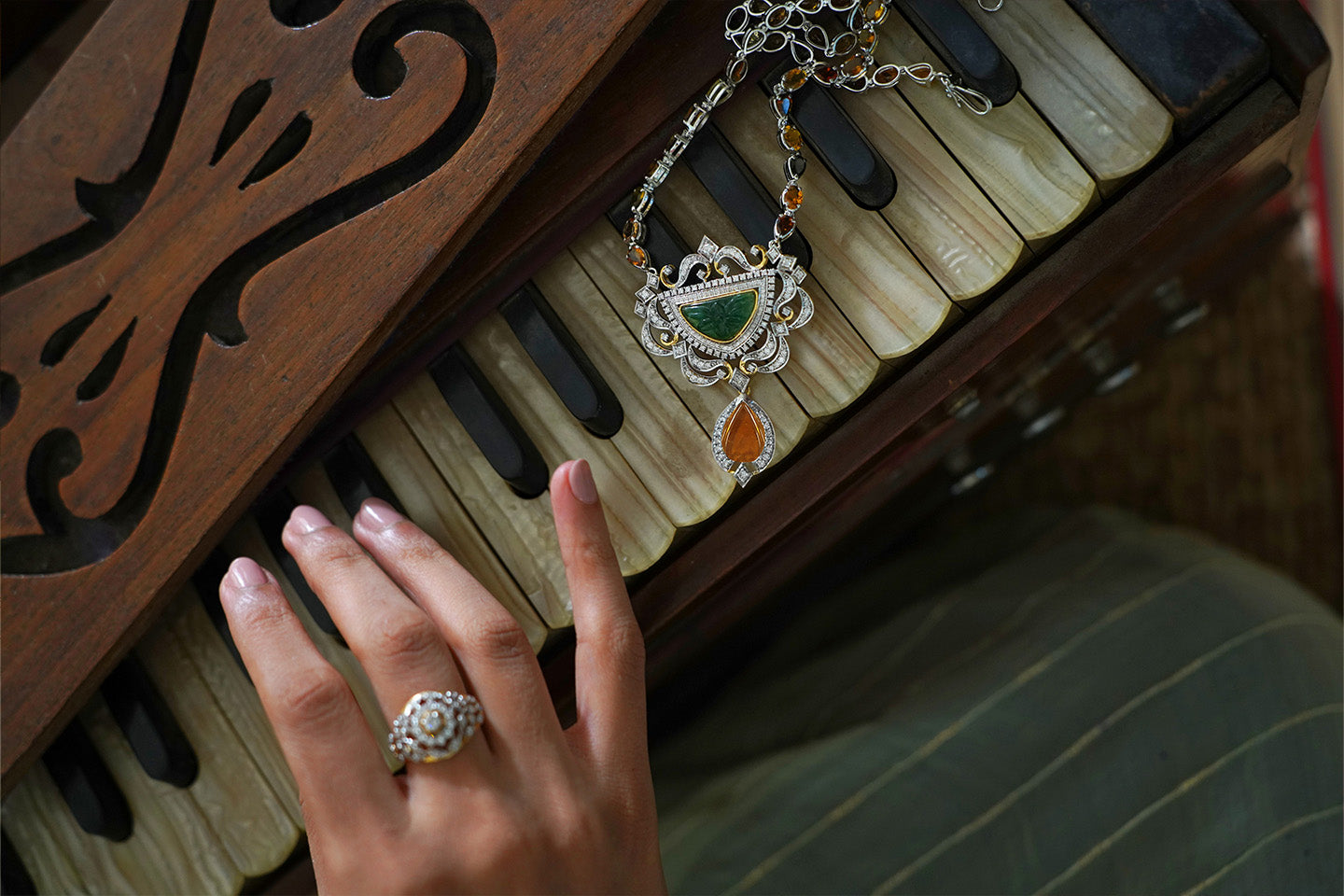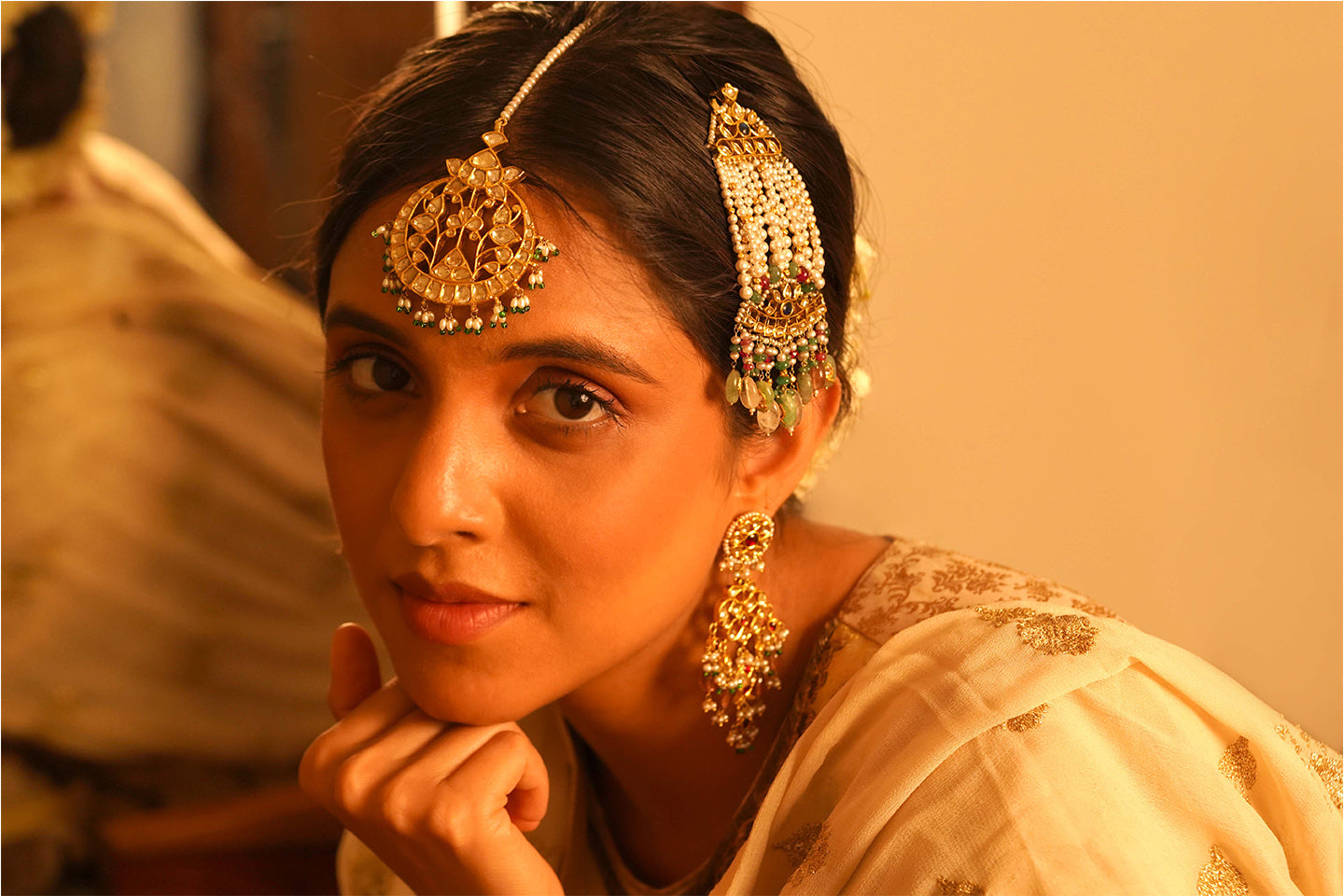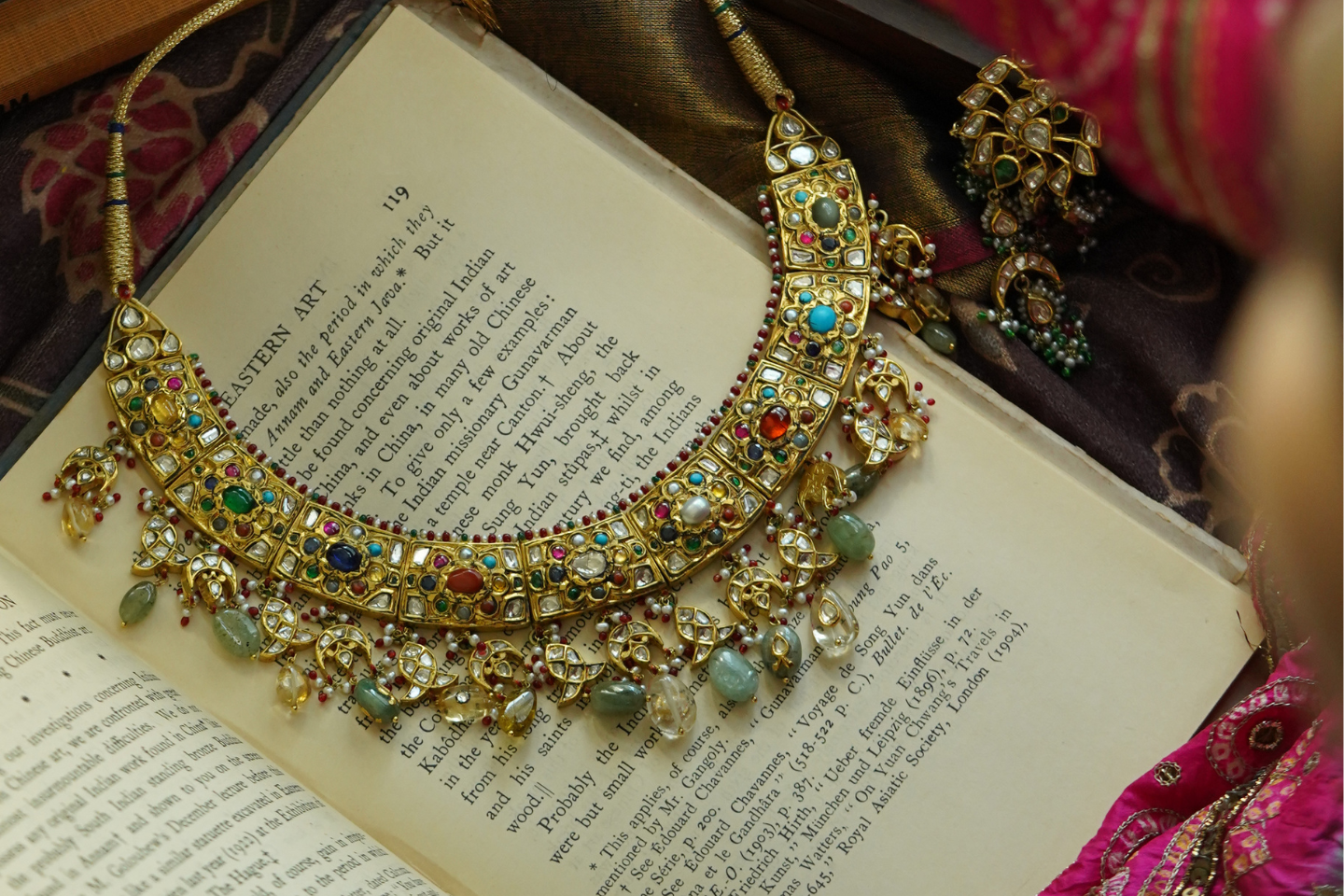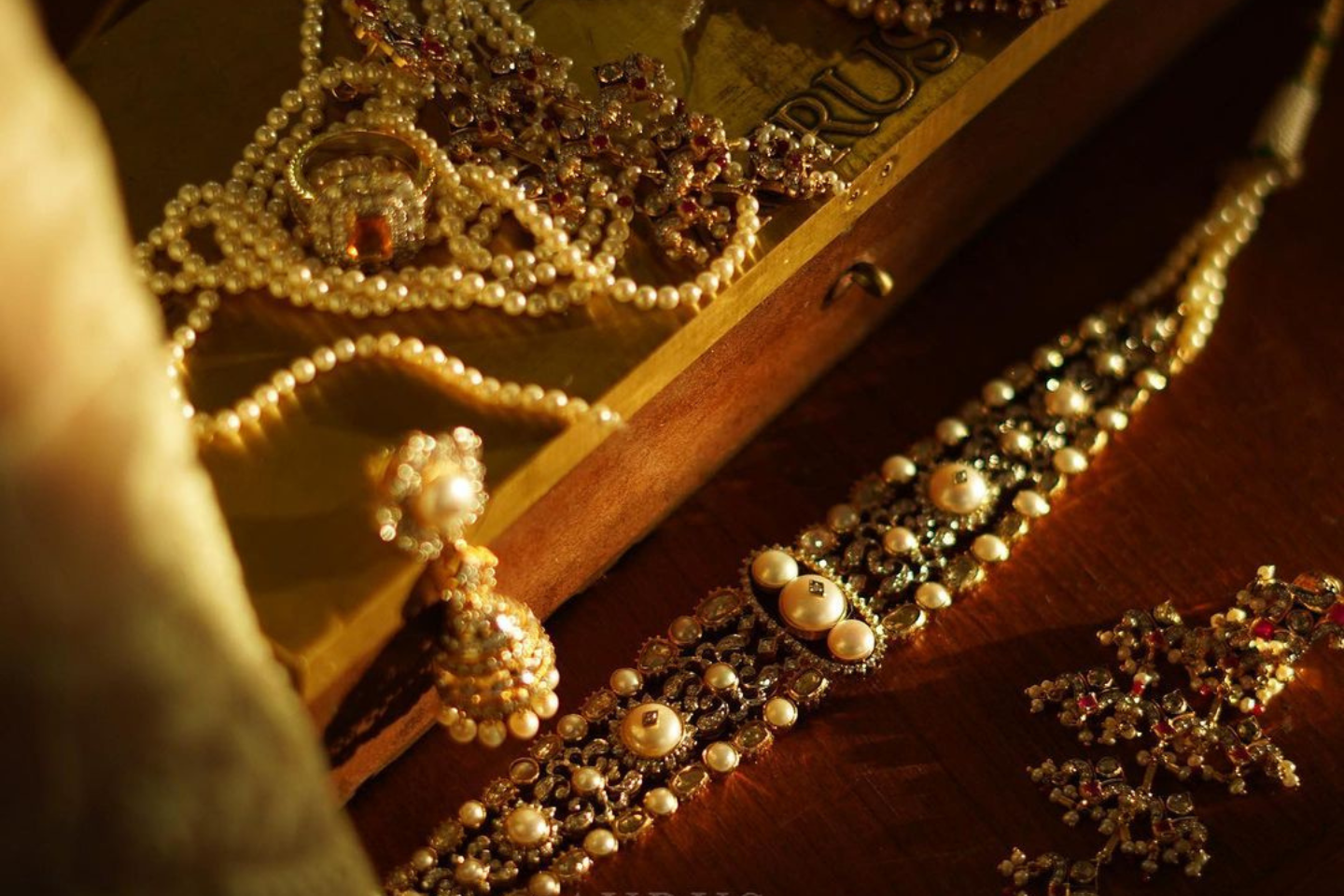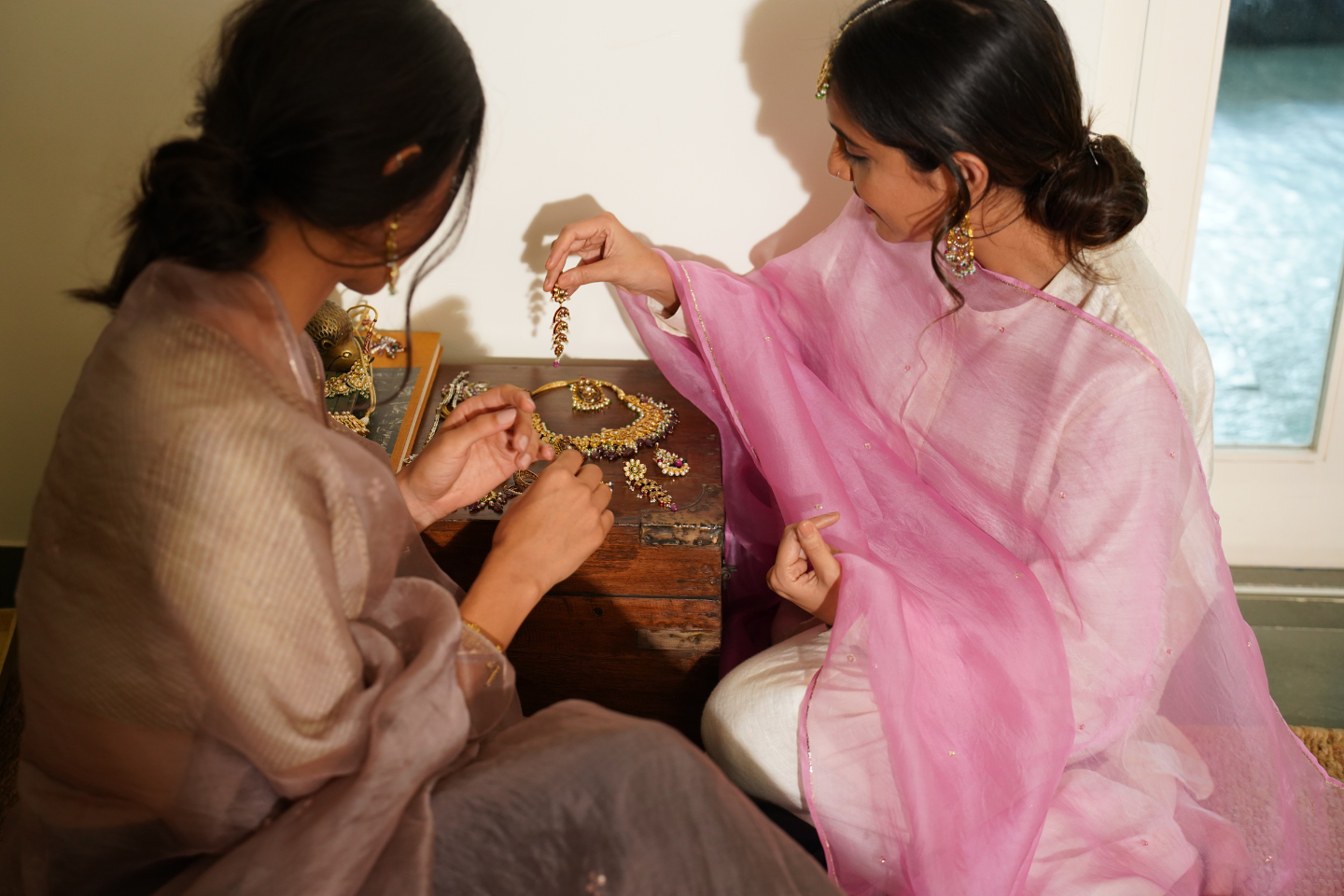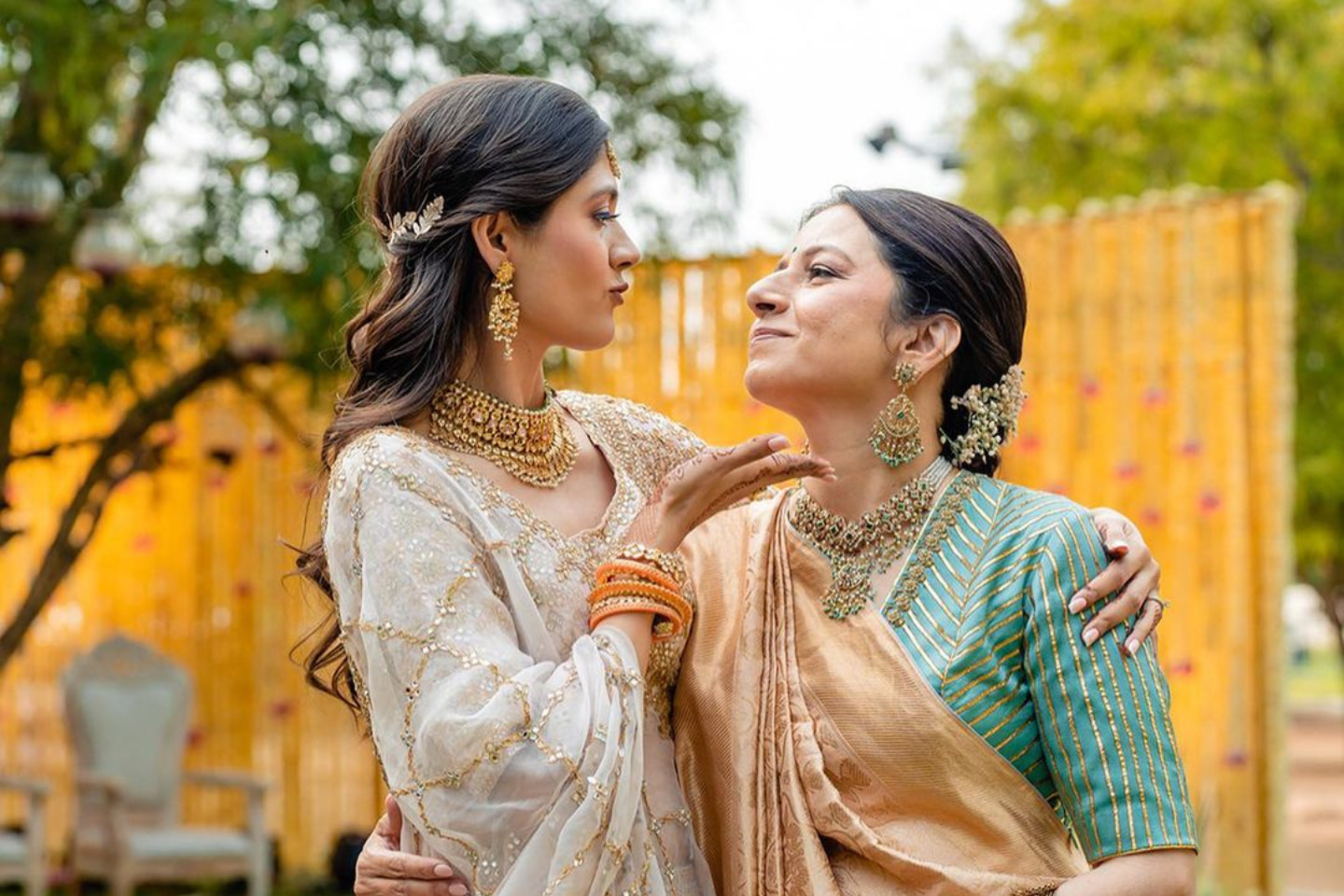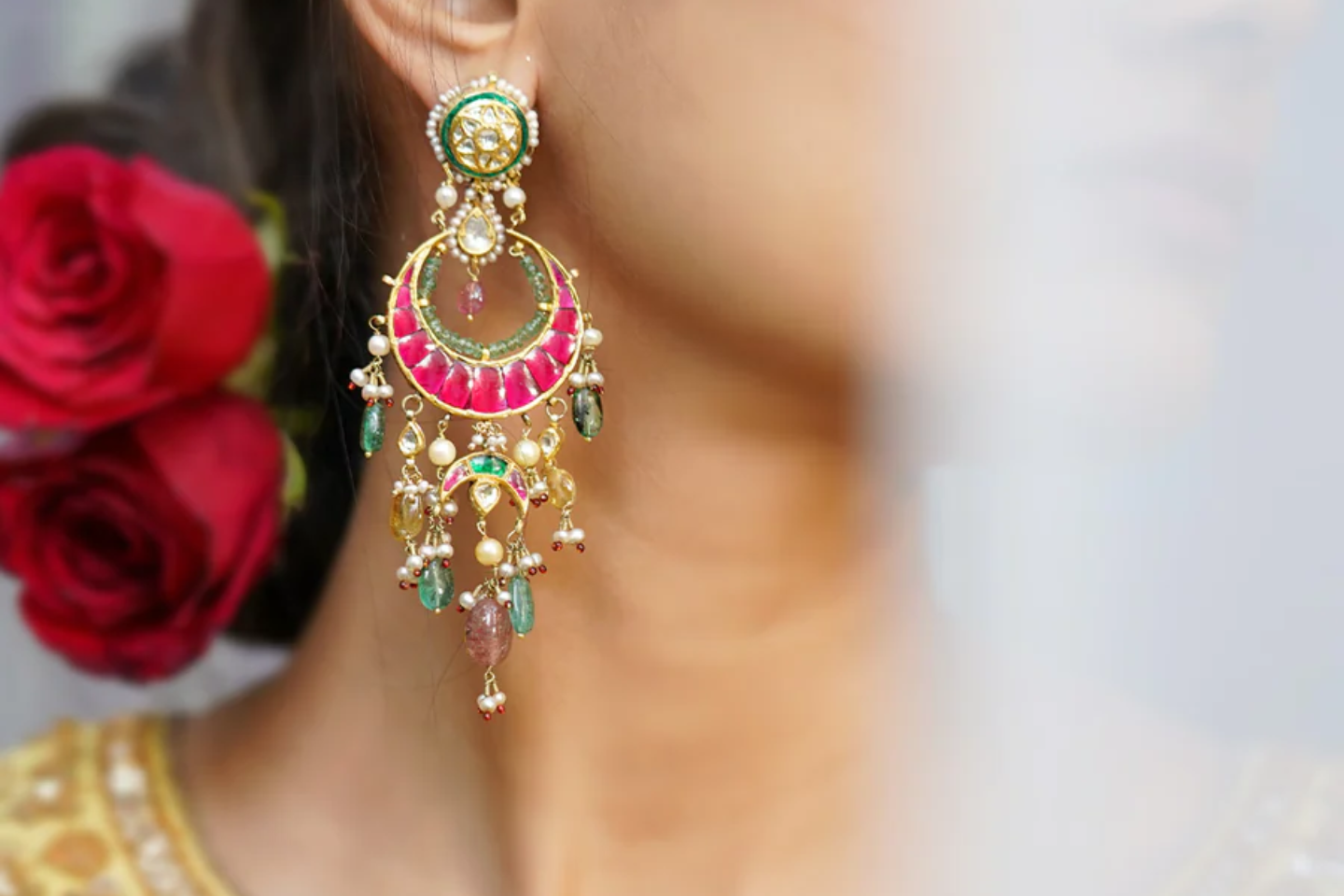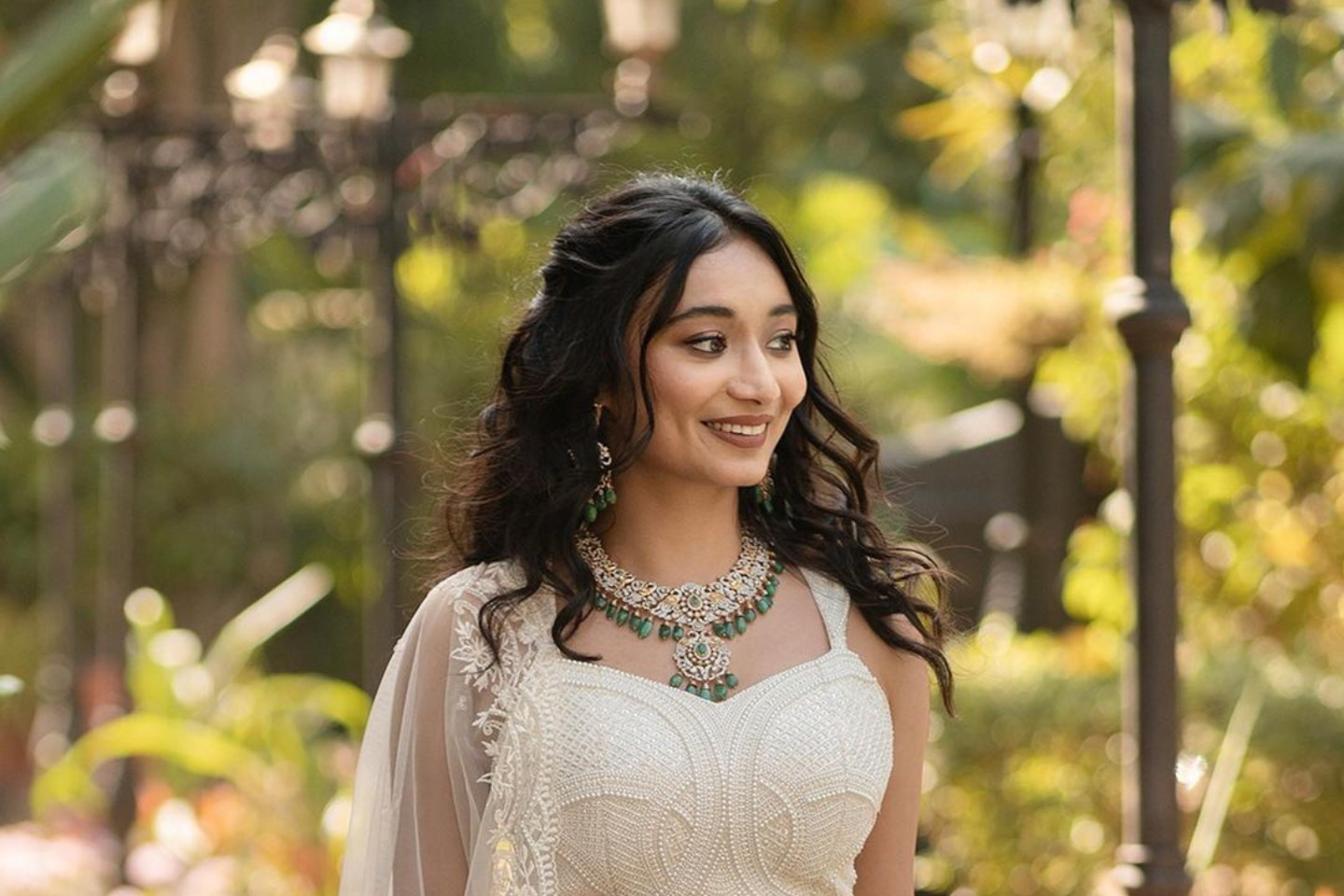The configuration of the Navagrahas and the Navaratna attributed to them creates a symbolism for the universe. As such, the configuration has a profound significance because it is said to awaken the consciousness of the individual's identity and the impact of cosmic forces on each individual. Because each celestial deity is considered to govern a specific direction, the stone that represents him does as well by consequence. The stone, in this configuration, becomes a site into which the deity can come down when the circumstances call for his presence and protection.

Image courtesy: Sampat Jewellers
As rulers of the sky and space, each heavenly deity has been assigned the custodianship of a specific direction, which includes the center, four cardinal points, and four intermediary compass points. The concept of spatial points is said to help humans comprehend their place in the architecture of creation.
The Absolute Navaratna Arrangement
For Hindus, the sun god, Surya, holds the most importance and is worshiped by them. Consequently, the cardinal points are labeled in reference to the direction from which the sun rises every day, i.e. east. The east is Apsara, “the front,” the west is Apara, “behind,” the north is Vama, “the left hand,” and the south is Dakshina, “the right hand.”
The square, which is fixed by cardinal points, is thought to be a final, definite form indicating the Absolute. The square is frequently used as the shape of a Hindu temple, which is built on what is said to be the pattern of the universe, with its plan conceived as a mandala. All parts, as in any mandala, are related to the center, from which power is transmitted to all other parts.

These armlets[…]are divided into two sections, the Maharatnani, or "great" gems (diamond, pearl, ruby, sapphire and emerald) and the uparatnani, or "lesser" gems (jacinth, topaz, cat's eye and coral, though these may vary). The stones are in turn linked to the celestial deities of the Hindu universe: diamond, for example, is linked with Venus, and the ruby with the sun. Each planet may have a good or bad influence, and the stones are arranged in jewelry so that the malevolent influences are kept away, and the benign influences are attracted to the wearer. The stones chosen for these armlets include moonstone, pearl, ruby, turquoise, coral, acquamarine, diamond, orange sapphire, white sapphire and hessonite. One has nine rubies at its centre; the other has a diamond surrounded by stones that are probably white sapphires.
Source and image courtesy: Victoria and Albert Museum
A properly organized Navaratna gemstone-set ornament, like a mandala by design, is said to offer its owner powerful protection against malicious forces once ritually purified. The Navaratna is said to maximize the wearer's benefit by incorporating the influences of all celestial bodies in one arrangement.
Arrangements Other Than the Absolute
Several types of jewelry pieces, such as rings, pendants, armbands, and chokers use the Navaratna gemstone arrangement. Due to the specific ornament form, various other configurations become necessary in addition to the main arrangement within a square.
As in an earring, the gemstones can be set in a circle, the most prevalent mandala form, which represents infinity. A configuration of two overlapping squares, one with the cardinal and the other with the intermediary points, with the stones forming either an octagon or a circle, is related to both the square and circle.

Image courtesy: Wikimedia Commons
When the stones are used in a strip or choker-style neckband, they must be placed in a long rectangle, with the ruby in the center and the other eight stones positioned four on either side. This configuration corresponds to a common linear arrangement of celestial deities in a temple.
In a longer necklace, akin to a garland, the same series can be repeated on each side, along with a Navaratna pendant in the center. The same linear pattern can be found in both stiff bangles and flexible bracelets. The primary stones may alternate with additional stones, such as diamonds, turquoise, or pearls, in extended linear arrangements. These extra stones can be utilized as fillers in other configurations as well.

Image courtesy: The Met Museum
According to tradition, the gemstones must all be the same size to give each deity equal merit (though sometimes the Sun-ruby is the largest). Each should be in good color and as close to perfection as feasible.
Some designs employ more gemstones than the nine primary stones. A possible explanation is that there are three metaphorical representations of the moon—the moonstone for the waxing moon, the pearl for the full moon, and the cat's eye for the waning moon.

Pair of armlets with Navaratna (nine jewels). Made or commissioned by PyariLal of Delhi (probably a shop[ or commissioning firm). Gold bordered with pearls and enamelled on the back and sides, and set with hessonite garnet, sapphire yellow (293-1871) or yellow beryl (293A-1871) or chrysoberyl (293A-1871) mother-of-pearl and red coral.
Source and image courtesy: Victoria and Albert Museum
The Holy Arrangement
The Navaratna gemstones are commonly used in rosaries in Tamil Nadu and other southern regions of India. The rosary is sometimes made with real jewels, and other times it is made with colored glass beads that look like gemstones.
The traditional Navaratna rosary has 108 beads overall—nine gemstone beads that are repeated in 12 groups. The 12 repetitions are a reference to the twelve months of the year.
